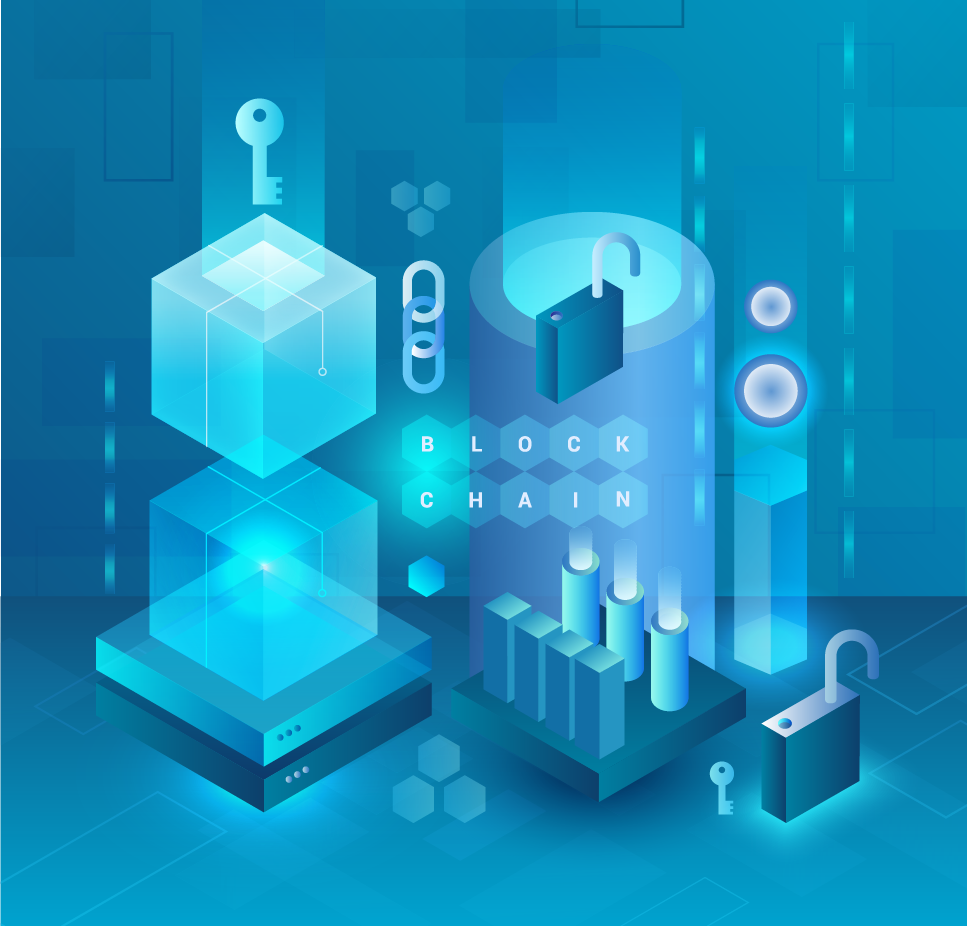There is hardly a person who hasn’t heard about blockchain at least something in the last two years. Even people very far from the IT-industry know that there are some distributed ledgers… But how they are relevant to real life? — you ask. Here we are telling you why blockchain is such an amazing thing. And why it is so useful in public services, finance, medicine, security, entrepreneurship.
Blockchain is…

It is a distributed ledger or a decentralized database. Let’s compare blockchain with a centralized database to grasp the main idea at once.
As an example of a centralized database, let’s take your regular computer. You store all your information here — work files, family photos, favorite videos. That is to say, all valuable in one place. And what huge trouble it could be if the hard drive «dies»! Or your cute baby spills juice on the computer, for instance…
However, you are a provident person, aren’t you? So, you do prevent such troubles. You copy all the information from your computer to an external media. Or better yet, to two or three ones. After that, you put one in the safe, the other you bring to your job — because the house may catch on fire suddenly, yes?
So, you don’t just copy the information. In addition, you regularly — every week — transfer new data from your computer to external media. In this way, you synchronize the information on all media, including the computer. Congratulations — you have created a distributed ledger!
However, this is still not a blockchain. One more thing is necessary. Blockchain means “the chain of blocks”. Thus, blocks contain data and go strictly one after another. The blocks are interconnected through mathematical algorithms. As a result, each new block contains a trace of all previous blocks. That is why it is impossible to alter data in earlier blocks. For this reason, there is no way to snatch the block out of the chain or to interchange blocks places.
The advantages of blockchain technology

Everyone knows that blockchain is cool stuff. Without getting deeply into technical details, we briefly explain why this is true:
Decentralization. The data stored in the blockchain and the transactions occurring don’t rely on a single center. In this way, blockchain protects users from such troubles as “server crash”, “program crash”. And other similar problems specific to centralized systems.
High level of trust and no need for a third party. Blockchain is a peer-to-peer network. As a rule, all participants have equal rights and opportunities. Blockchain users can interact with each other directly. Accordingly, there is no need for a third party — record keeper, administrator, etc.
Transparency and immutability. Blockchain stores each operation. As a result, it is impossible to distort or to remove anything. You have strong protection against malicious attempts to erase your data or to forge transactions. For instance, if all the banks switched to the blockchain, it would be much more difficult for fraudsters to withdraw your money from accounts or to pin a fake loan on you.
Security. Blockchain claims to be one of the most secure IT-systems to date. Security is ensured by:
Cryptography, that is the encryption of data contained in the blockchain. Of course, not only blockchain technology uses encryption. But this is where encryption is the core of the system.
Consensus. Each new block of data should be verified by all participants of the system.
Distribution. The ledger is stored on many distributed nodes. In this way, destroying or disabling several nodes doesn’t stop or suspend the entire system.
It is fair to say that today blockchain is not a panacea for everything. So, distributed ledgers are far from ideal. Their use raises problems and controversies. However, this technology has great potential and obvious advantages over centralized systems.